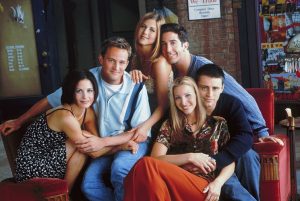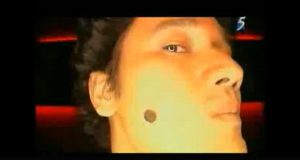All images by Stephanie Lee for RICE Media.
Phua Chu Kang, the titular character of a sitcom which last aired close to 17 years ago, still haunts Singapore like a spectre in yellow boots.
For many of us, it’s difficult to imagine a time before Phua Chu Kang Pte Ltd. It’s so difficult that we can probably mark the arrival of the character in our cultural history as ‘Pre-PCK’ and ‘Post-PCK’.
For the rare unacquainted few, Phua Chu Kang Pte Ltd follows the comedic hijinks of a general contractor as he navigates life, family, and work in Singapore. The titular character is larger-than-life, amping up and leaning on ah beng stereotypes for laughs.
Phua Chu Kang has a curly afro perm and a large mole. His uniform, a loosely-worn striped shirt and a pair of yellow boots, is now iconic. He struggles with ‘good’ English and often mispronounces words: “Don’t Pray Pray” comes to mind.
The sitcom won Best Comedy Programme at the Asian Television Awards for six consecutive years from 1998 to 2003. Its last episode aired on February 11, 2007 (let’s not talk about Phua Chu Kang Sdn Bhd).
And for some reason, Phua Chu Kang is still relevant today.
Even after generations of Singaporeans grew up without Phua Chu Kang on TV, he never really left. The afro wig is never too far away from a brand’s bus advertisement; the distinct ah beng intonation is never too far away from a marketing campaign.
In August 2020, Shopee signed Phua Chu Kang as a brand ambassador. During the pandemic in 2021, he reprised his role as public health ambassador, urging Singaporeans to get vaccinated through song and dance. The last time he was in a similar role was during the 2003 SARS outbreak, in a rap music video that goes hard. These days, he’s been telling people how to earn points faster for the yuu Rewards Club.
Phua Chu Kang is immortal. Gurmit Singh, the actor behind the character, is not. There will be a time when he hangs up the yellow boots for good.
But it won’t be anytime soon, Gurmit says.
Gurmit Singh Returns to His Roots
In 1992, Singaporeans had yet to be introduced to Phua Chu Kang. It was Gurmit Singh’s last year as a performer at Haw Par Villa, where he would portray various characters from Chinese literature and folklore. He was only 27 when he ended his four-year stint at the theme park.
During his time at Haw Par Villa, someone from the Singapore Broadcasting Corporation recommended that he join television.
And he did. Gurmit would eventually host Live on Five, a live variety show on Channel 5 in 1994. Phua Chu Kang, the character, came into being three years later. His contractor persona debuted on the second season of Gurmit’s World—a show Gurmit would star in.
Surprisingly, Gurmit had not stepped into Haw Par Villa since 1992. 32 years later, he finds himself back at his old workplace on a Wednesday afternoon. The park is quiet, save for disparate groups of tourists roaming the ground.
He sports a chequered shirt and a pair of denim jeans. He bought both at a discount from the wardrobe department of Sunny Side Up—a recent long-running Mediacorp drama. Under his arm is a motorcycle helmet.
“This place used to be full of visitors. It was so full that they had to close the gates to prevent more people from entering. Too many people and it would be a fire hazard,” the 59-year-old showbiz veteran recalls.
Whether in front or behind the camera, Gurmit has a habit of breaking into comedic bits, moving in and out of different characters and angling for the next joke.
He never loses a beat. When Eudea, our video producer, makes a remark about getting bitten by a mosquito, Gurmit retorts: “Sometimes, it’s just one bite that activates the other areas.”
Where is this going? He calmly points to her red ink tattoo on her arm and quips: “That’s not a tattoo. That’s actually a mosquito bite.”
Even among Haw Par Villa’s eye-catching displays and imposing exhibits, it’s Gurmit who is larger than life. But Gurmit is a seasoned media professional. His disarming humour puts even the most starstruck of fans at ease.
Gurmit Singh’s Alter Ego
Every so often, a plane flies close enough to Haw Par Villa to drown out our conversation.
The whir of the plane’s engine reverberates off the park’s 1,000 statues and 150 dioramas, interrupting any train of thought. Gurmit traces the flight of the plane and remarks that they must be lost. He breaks into a bit, shouting out directions to the pilots.
“It’s my plane, sorry. Park over there. Pasir Panjang Road, turn right.”
The gem that is his comedic timing is on full display. It’s the very same acute sense of working-man humour that made Singaporeans fall in love with Phua Chu Kang so many years ago.
“[Phua Chu Kang] is more of an alter ego. Like Jekyll and Hyde. When he performs, he is so different from me in real life,” Gurmit explains.
“I regard him as a blessing because he’s brought me so much fame, so much accessibility.” He speaks about Phua Chu Kang fondly, as if the cheeky contractor was his benefactor.
“If someone goes to my funeral and thinks they’re going to a Phua Chu Kang funeral, that’s fine with me.”
Phua Chu Kang, the character, embodies the essence of shared Singaporean experiences. The afro, mole, and yellow boots offer a potent immunity, allowing the character to allude to social issues while delivering the bite in a light-hearted manner.
“When I’m hosting a show as Phua Chu Kang, I can make fun of ministers, and they’re all okay with it. He gets away with a lot of things. And even today, I don’t know what the formula behind Phua Chu Kang is. I still don’t know.”
If Gurmit knew the formula, he admits that he would have created other characters with it. But perhaps it’s a role that only comes once in a lifetime.
“I will not get tired of Phua Chu Kang. I think it’s hypocritical for actors to talk about wanting a role they want to be identified with and getting tired of the role when they’ve finally gotten something like that.”
The Man Behind the Mole
When the cameras are switched off and turned away, there is a noticeable transformation. He is less excitable and less likely to go into comedic tangents.
The funny-man public persona retreats; Gurmit is much calmer.
Every so often, a camera would come into view for candid shots. When he realises the camera’s on him, Gurmit sits up a little bit straighter and speaks a little bit faster—almost as if he’s setting himself up for the next punchline. By now, it’s an instinct.
“My philosophy is that ‘Gurmit Singh’ is a product the public has bought. My salary is paid by people who watch my shows. The bosses at the station change all the time, but the audience doesn’t,” he offers.
“I am willing to interact with people who support me when I am outside because I’m your product.” Evidently so. Aside from the planes, groups of tourists would walk through the set-up and interrupt the conversation.
A family visiting Haw Par Villa from the UK sees our camera setup and asks us why we’re even talking to Gurmit. He chuckles. “I’m famous,” he responds. “You can Google me.”
They rush to take a picture, even though they barely have any idea who he is.
These tourists might not recognise Gurmit Singh, but it’s likely that some British people might. UK-based media outlet, The Guardian, was so taken by Phua Chu Kang’s role as a public health ambassador during the 2020 pandemic that he got a feature.
Gurmit knew fame was part of the package when he joined show business. “If you’re a surgeon, you have to deal with blood. It’s the same thing. I’m in this industry, and it’s part of my job.”
This line of thinking seems almost unhealthy, a work-life balance conundrum unique to celebrities. Where does Gurmit Singh (the product) end and Gurmit Singh (the human being) start?
“I draw the line with my family. If I’m with my wife or kids, I might not accept requests for photos. Or when I’m at home, in my car, or in my helmet.”
The Price of Performing
It’s difficult to shed the funny-man image, especially when the funny-man image has given you so much—business-class flights, a comfortable house, and food on the table. The finer things in life, however, come at a price.
Gurmit’s full-time Mediacorp commitments at the peak of his PCK fame took time away from his family. He worked on two projects on any given day from 1994 to 2014. On some days, it would be a rehearsal for Phua Chu Kang Pte Ltd in the morning, then a shoot for Singapore Idol in the afternoon.
It was so tightly controlled that if he wanted to attend a friend’s wedding, he’d have to check with Mediacorp. Many family milestones were missed, but Gurmit often justified it by providing a comfortable life for his family—something he didn’t grow up with.
“I left Mediacorp in 2015, but in 2010 I was already thinking about how I could provide for my family and still have time with them.
“I considered working at McDonald’s because I love Filet-O-Fish. I would skip recess to save money the whole week so that I could hang out with my classmates after school at McDonald’s. I saved $2, just enough for a Filet-O-Fish meal at the time.”
When asked whether he sees himself as a comedian, he chuckles. He admits that he’s never thought of himself as funny. Gurmit Singh, the product, is funny. But not Gurmit Singh the human.
Whatever Happened to the Singapore Sitcom?
Phua Chu Kang continues to resonate with Singaporeans partially because we’ve had no other over-the-top characters in our shared local pop culture to relate to.
Singaporeans once looked forward to watching local sitcoms on television. Gurmit calls it an “appointment viewing”—a chunk of time blocked out in our schedule to go home and turn on the telly to catch an episode.
The age of streaming has done away with all that. Missing an episode of your favourite sitcom doesn’t hurt as much anymore. You don’t have to run your fingers through the television schedule on a national broadsheet to figure out when there’ll be a rerun of the episode you missed. These days, it’s a matter of streaming it.
The media landscape has changed, but how much influence Phua Chu Kang yields perhaps illustrates an underlying yearning for Singapore’s next great sitcom icon. That, in spite of changing media demands and consumption, the Singapore sitcom still holds influence.
Gone are the days of VR Man, Living with Lydia, Police & Thief, and Phua Chu Kang. But mere mentions of these shows invoke a sense of nostalgia and shared laughs among Singaporeans.
Could younger generations say the same about national television in 30 years’ time? The jury is still out.
“I’m not in the management meetings, so I don’t know what happened there,” Gurmit prefaces. “From what I see, there has been a huge budget cut. In my last few years at MediaCorp, I saw the cutbacks.”
There is a pensiveness in his responses, as if he’s overtaken by a sudden longing for the good old days of broadcast television.
“They thought that if you had a good script, people would laugh. But that’s not true. If you look at Phua Chu Kang, every aspect of production was taken care of. We sat down and talked about things like whether he should have a mole. Should the mole have a strand of hair on it?”
The Immortal Phua Chu Kang
What fuels Phua Chu Kang to continue existing in our collective consciousness?
It lies in the amount of care that went into the crafting and delivery of the persona. Gurmit loves the character he created, and his love bleeds through whatever the script demands of him. You may not always appreciate Phua Chu Kang’s (omni)presence, but you can always recognise Gurmit’s charismatic commitment to the role.
Phua Chu Kang, in all his exaggerated gestures and loud outfit, somehow just makes sense. And it only makes sense because of Gurmit, product or not.
Gurmit is sweaty and exhausted by the time we end our chat—he’s off to meet some friends. In line with his strict separation between the product and the person, he doesn’t say where. He grabs his helmet, looks back, and bids the RICE team farewell.
It’s anyone’s guess as to when Gurmit will ever visit Haw Par Villa again. As a cultural theme park, it hosts a collection of folklore and figures of legend. If they ever had to give this theme park a cultural update, Phua Chu Kang would be front and centre at the gates, greeting visitors like Gurmit did in 1988.
His helmet’s visor is tinted black, fully rigged with cameras. It’s also his sanctuary, Gurmit admits. The helmet, with its tinted visor and matte finish, is where Gurmit can just be. There’s no need to perform.
And when Gurmit, the human being, zooms down the West Coast Highway among Singaporean motorists and commuters who would have recognised him, they would have been none the wiser. Phua Chu Kang has been with them whether they know it or not.







